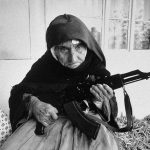Codes or symbols always have a special allure, sparking curiosity, especially among analysts. Some take decades to decipher, and a dress from the 19th century is one of them.
For nearly a decade, sleuths had tried to decode a mysterious message found within the folds of a silk bustle dress. Finally, one analyst successfully cracked the case. Come with us as we unravel the secrets hidden within.
The discovery of the silk bustle dress
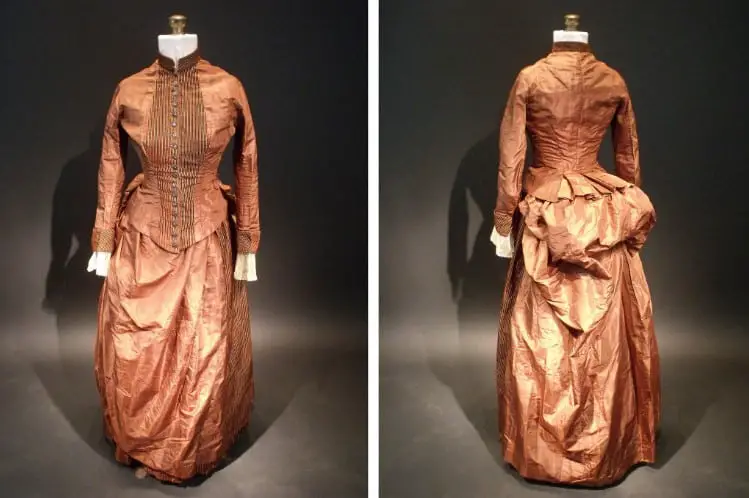
About a decade ago, Sara Rivers Cofield, an archaeologist, was on her usual search for interesting period clothing when she stumbled upon an antique mall in Maine. There, she came across a “textbook” silk bustle dress from the 1800s that seemed straight out of a history book.
The bronze-colored dress was in good condition, featuring a beautifully draped skirt, a puffy bustle, and metal buttons adorned with a Shakespearean design.
Intrigued, Ms. Rivers Cofield purchased it for a mere $100. Little did she know that this dress held a secret—a hidden pocket containing a cryptic note.
Part of the message was written on two, scrunched-up translucent sheets of paper. It was “Bismark Omit leafage buck bank / Paul Ramify loamy event false new event.”
The unintelligible words got huge notice and then became recognized as one of the 50 most “unsolvable” codes in the world, according to NOAA (National Oceanic and Atmospheric Administration).
Ms. Rivers Cofield was baffled. Was it a writing exercise? A list? A code? “What the…?,” she wrote on her blog in 2014. “I’m putting it up here in case there’s some decoding prodigy out there looking for a project.”
Unsuccessful attempts by online sleuths to solve the case
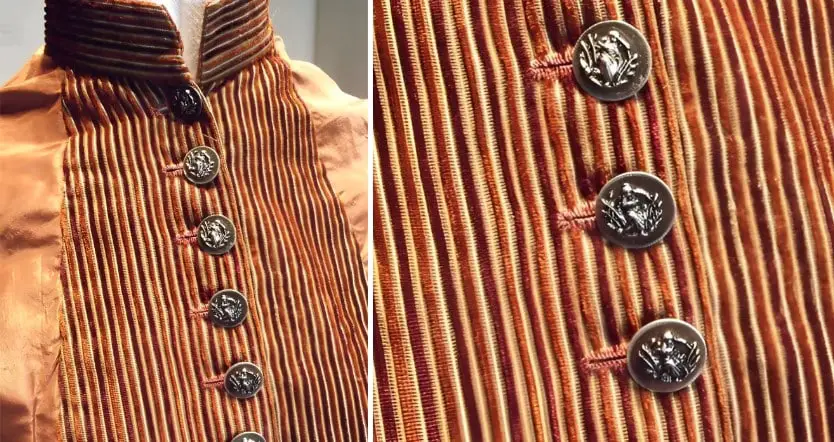
The archeologist noticed that both the dress and the paper were likely from the 1880s, but couldn’t fully understand the meaning of the messages written on the paper.
The lines of text seemed to start with a place name, followed by seemingly random verbs and nouns, as reported by NOAA.
Sara shared her findings on her blog, describing the peculiarities she saw: “There are also numbers between the lines, each line is marked off with a different color, and there are weird time-like notes in the margin; 10 pm, 1113PM, and 1124 P. I feel like those clues actually DO point to code of some kind.”
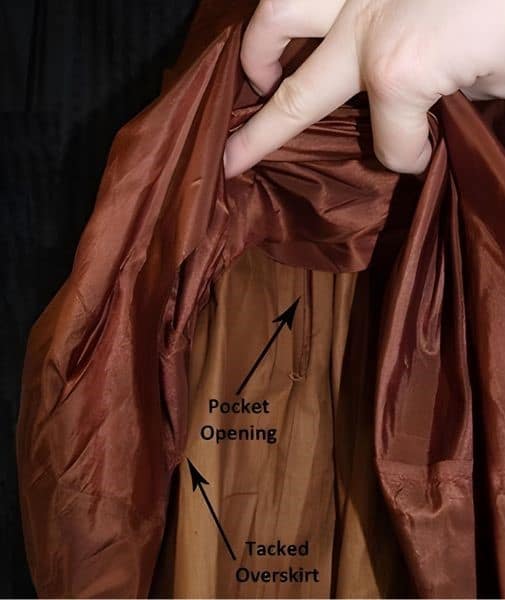
In 2017, a blogger included the mysterious note in his list of the Top 50 unsolved encrypted messages and floated more theories. Was it a cryptic love note? Dress measurements? Civil War codes?
Sara Rivers Cofield, however, quickly dismissed any interpretation linked to the Civil War. Based on her research and examination of 1880s catalogs from Bloomingdale’s, a well-known department store chain, she was certain that the dress belonged to that era. By then, the Civil War had concluded nearly 20 years earlier.
Another theory that emerged was that the note could be a form of communication related to the telegraph. The telegraph was a new method of sending quick messages that appeared in the 1800s in the United States.
Senders were charged based on the number of words in their messages, making it a plausible connection to the cryptic note.
“I had kind of abandoned the blog at that point,” Rivers Cofield said.
“Every once in a while I would see that a comment was posted or that some other codebreaker would email me and be like, ‘Hey, I’m still interested in this,’ but nobody ever solved it.”
The huge effort of a Canadian researcher to crack the code
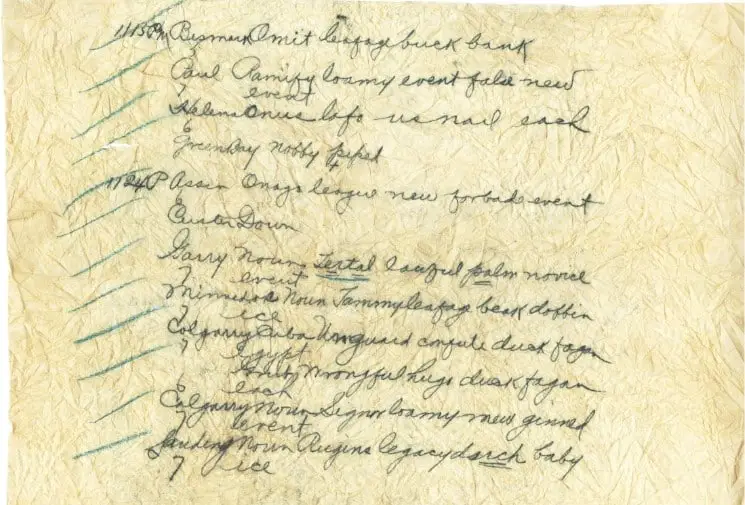
According to the administration, the invention of the telegraph revolutionized how news was shared in the mid-1800s, which allowed people to send messages quickly between towns.
Wayne Chan, a data analyst at the University of Manitoba, explained in an academic paper: “Since telegraph companies charged by the number of words in a telegram, codes to compress a message to reduce the number of words became popular.”
Wayne provided an example: “A phrase such as ‘The crew are all drunk’ may be substituted with a codeword such as “CRIMPING.”
After his extensive search through approximately 170 telegraphic codebooks, Wayne delved deeper into the era of the telegraph.
She discovered an old book titled “Telegraphic Tales and Telegraphic History,” which contained a section on the weather code used by the U.S. Army Signal Corps.
Interestingly, he found examples that resembled the codewords found in the dress’s note, leading him to believe that the code might be related to weather.
The secret unlocked
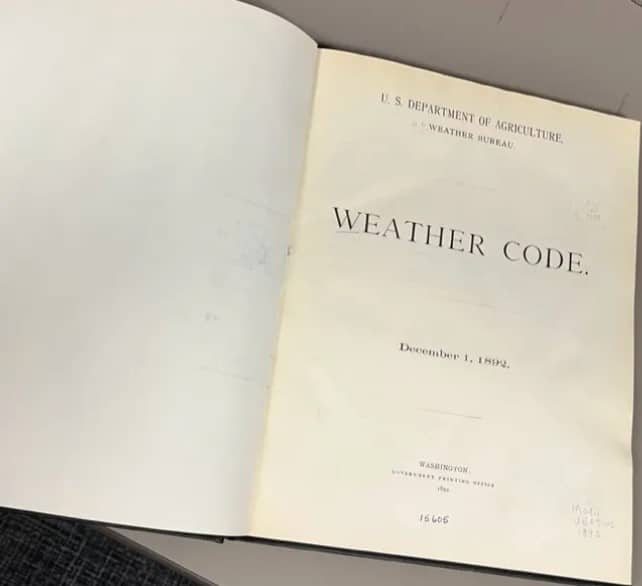
As we mentioned above, the invention of the telegraph changed how news was shared, so news about the weather was transmitted faster than the actual weather itself.
However, to save money, meteorological variables had to be shortened into code books. As a result, it is likely that the mysterious cryptogram on the silk dress was used by the Army Signal Service Division between 1870 and 1891.
After connection with Katie Poser, a librarian at NOAA’s Central Library in Silver Spring, Maryland, Wayne received a PDF copy of a weather telegraph code book, published in 1892.
Using the NOAA resource that Katie sent to him and some other resources, Wayne deduced that the messages were from Signal Service weather stations in the U.S. and Canada.
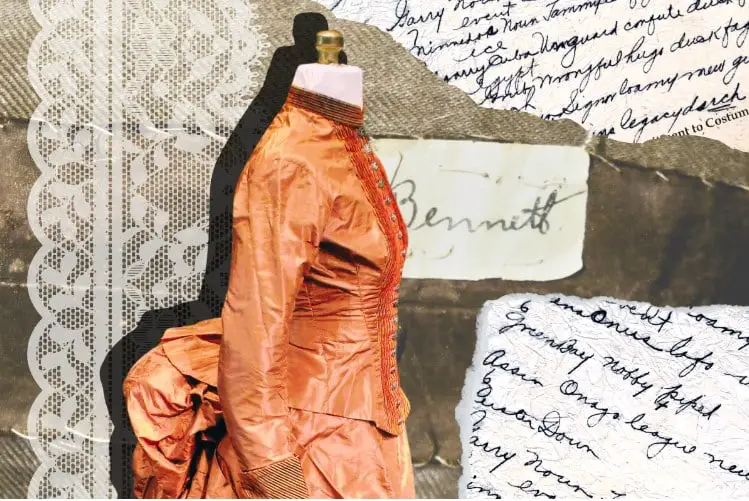
Katie provided the NOAA resource and it was useful. Wayne also referred to some other resources and then made an important deduction.
He concluded that the messages found on the papers originated from weather stations operated by the Signal Service in both the United States and Canada.
“When I first thought I cracked it, I did feel really excited,” Mr. Chan said, noting that it took a while to build enough evidence to confirm his theory was correct. “It is probably one of the most complex telegraphic codes that I’ve ever seen,” he said.
For example, the phrase “Bismark Omit leafage buck bank” indicated that the reading was taken at Bismarck station in the Dakota Territory.
The word “Omit” represented an air temperature of 56 degrees and a pressure of 0.08 inches of mercury, although the National Oceanic and Atmospheric Administration noted that the actual temperature might have been higher.
“Leafage” referred to a dew point of 32 degrees, observed at 10 p.m. “Buck” indicated clear weather with no precipitation and a northerly wind. Lastly, “Bank” denoted a wind velocity of 12 miles per hour and a clear sunset.
Through further research using old daily Signal Service weather maps, Wayne was able to determine the exact date of the observations: May 27, 1888.
However, there are some mysteries surrounding the dress. Who owned the dress? Why did they have weather codes concealed in a hidden pocket?
“It’s tantalizing,” said Ms. Rivers Cofield, who found the dress. She also noted that a name, “Bennet,” was written on a paper tag stitched into the garment.
“Presumably, whoever did that is the last person who owned the dress, and presumably, the last person who owned the dress,” she added, “put the code in the pocket.”

